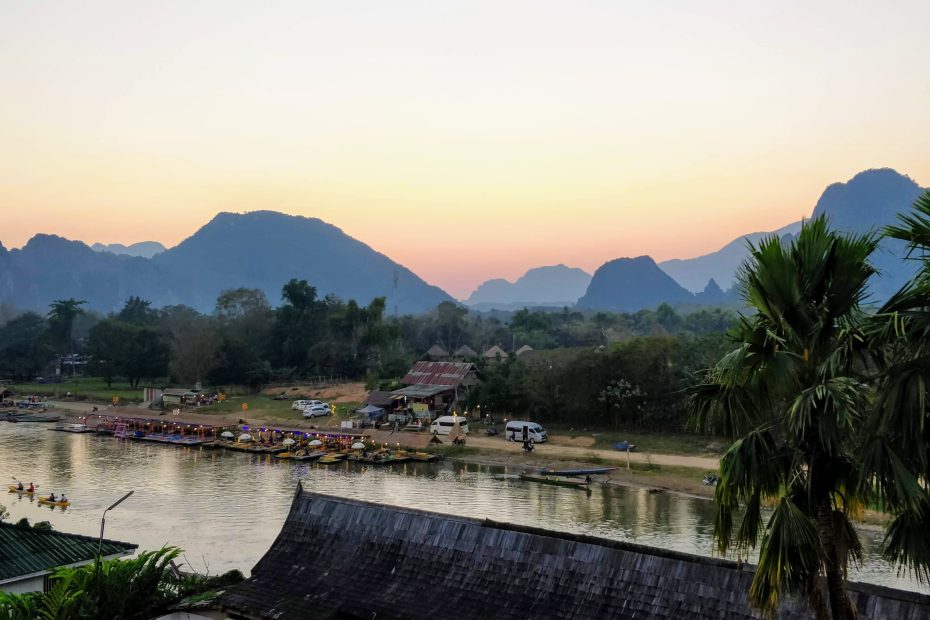Table of Contents
Introduction
Nestled between Thailand, Cambodia, China, and Vietnam lies the enchanting country of Laos. With its mist-covered mountains, thundering waterfalls, and sleepy riverside towns, Laos retains a pristine natural beauty and cultural richness unmatched elsewhere in Southeast Asia. After decades of instability, this landlocked nation now welcomes visitors to experience its gentle pace of life and warm hospitality. Join me as we explore the peaceful charms of this often overlooked gem.
Geography and Climate
Laos is a mountainous, landlocked country covered predominantly by dense forests. Several major rivers, including the mighty Mekong, wind through its rugged terrain. The climate is tropical and monsoonal, meaning the rainy season lasts from May to October. The remaining months bring cooler and drier weather. With an array of microclimates, the weather varies across the country. But one thing is constant – the lush greenery blanketing the countryside.
Natural Wonders
One cannot discuss Laos without mentioning the Mekong River. This vital waterway shapes life for communities along its banks. Take a slow boat between Luang Prabang and the Thai border to experience the Mekong’s tranquility. Laos’ forests boast thundering waterfalls, like Kuang Si with its crystalline multi-tiered cascades. Deep inside mountainous areas lie extensive cave systems just waiting to be explored.
Wildlife thrives in Laos’ protected habitats. Elephants, tigers, monkeys, and over 850 bird species call this region home. With eco-tourism initiatives, visitors can spot these creatures respectfully and safely. Even in cities like Vientiane, you may catch glimpses of lizards, butterflies, and water monitors going about their day.
Cities and Temples
For an introduction to Laos, start in Luang Prabang. This UNESCO World Heritage Site blends ancient temples with old-world European architecture. Thirty-three gilded wats, including Wat Xieng Thong with its sweeping rooftop, dot the town. Contemplate the sunset overlooking the Mekong and wake before dawn to offer alms to the monks.
Vientiane may be Laos’ capital, but it feels more like a big village. Wander tree-lined boulevards to Pha That Luang, the national symbol of Laos. Or visit Buddha Park to see the bizarre concrete sculptures mingling Hindu and Buddhist imagery. Down south, Pakse serves as a gateway to the Bolaven Plateau’s waterfalls and coffee plantations.
Outdoor Activities
With so much natural beauty, Laos provides endless active adventures. Many trek through hill tribe villages to experience rural life. Kayaking and tubing down the river channels offers a fun way to relax. For the daring, ziplining and rock climbing provide an adrenaline rush. Elephant rides through the jungle create lifelong memories but choose excursions that put animal welfare first.
Cuisine
There’s much deliciousness to savor in Laos. Sticky rice accompanies every meal. Grilled Mekong river fish and papaya salad feature prominently on menus. Crunchy green mango salad and sin dad (Lao barbecue) are local favorites. Ortolan, a grilled chicken dish, offers a burst of herbs and spices. And for drink, Beerlao refreshes after an active day. Don’t forget a strong cup of Lao coffee!
People and Culture
Despite past conflicts, the people of Laos maintain a gentle disposition and keen sense of humor. Their warm hospitality delights visitors. Being patient and avoiding confrontation are key to smooth interactions. The national language is Lao, but many also speak French and English. Most inhabitants are Theravada Buddhists, a faith that imbues daily life. You’ll often see saffron-robed monks receiving alms. Traditional music features the khene (Lao mouth organ), while folk dances act out scenes from local myths.
Challenges Facing Laos
This developing nation still faces many challenges. Rural villages contend with poverty and lack of resources. Sadly, unexploded ordnance from past bombings still poses dangers. Environmental issues like illegal wildlife trading, deforestation, and dam construction threaten ecosystems. But local groups work hard to create sustainable solutions. With careful tourism, visitor dollars can assist communities in need.
Responsible Tourism
To preserve Laos’ gifts for future generations, we must tread lightly as guests. Select eco-lodges over mass tourism hotels. Hire local guides to share their wisdom. Avoid tourist traps that exploit people and animals. Instead, shop at village cooperatives for handmade textiles. Eat at small family restaurants to support local economies. Show respect at religious sites by dressing and behaving appropriately. Spread your money widely, as a little can go a long way here.
Conclusion
The natural splendor, rich cultures, and welcoming spirit of Laos offer an experience like no other. As Laos opens its arms wider to visitors, we must cherish its gifts through responsible travel. By immersing yourself in Laos’ gentle rhythms, you’ll find a piece of your heart remains in this land still untouched by time. I hope you’ll feel inspired, as I have, to contribute to the preservation of this country’s treasures for generations to come.
FAQs
What is the best time of year to visit Laos?
The best time to visit Laos is during its dry season from November to February. You’ll have pleasant weather and the least amount of rain.
What vaccinations do I need before going to Laos?
Recommended vaccinations for Laos include Hepatitis A, Typhoid, Tetanus, Diptheria, Polio and Rabies. Malaria prevention medication may also be a good idea.
Is Laos safe to visit?
Laos is generally considered a safe country to visit, especially in larger cities and towns popular with tourists. However, unexploded ordnance is still a risk in rural areas. Exercise caution and hire a guide when venturing off the beaten path. Petty crime can happen, so keep valuables secure.
What is the currency used in Laos?
The official currency of Laos is the Lao Kip. Many tourism businesses also accept US dollars and Thai baht. Visa and Mastercard are accepted at some shops and hotels, but overall Laos is still a largely cash-based society.
What is the food like in Laos?
Lao cuisine features fresh herbs, spices, noodles, vegetables, rice, fish, and meats. Common dishes include larb (spicy minced meat salad), papaya salad, sticky rice, grilled Mekong fish, and French-influenced sandwiches and baguettes.
